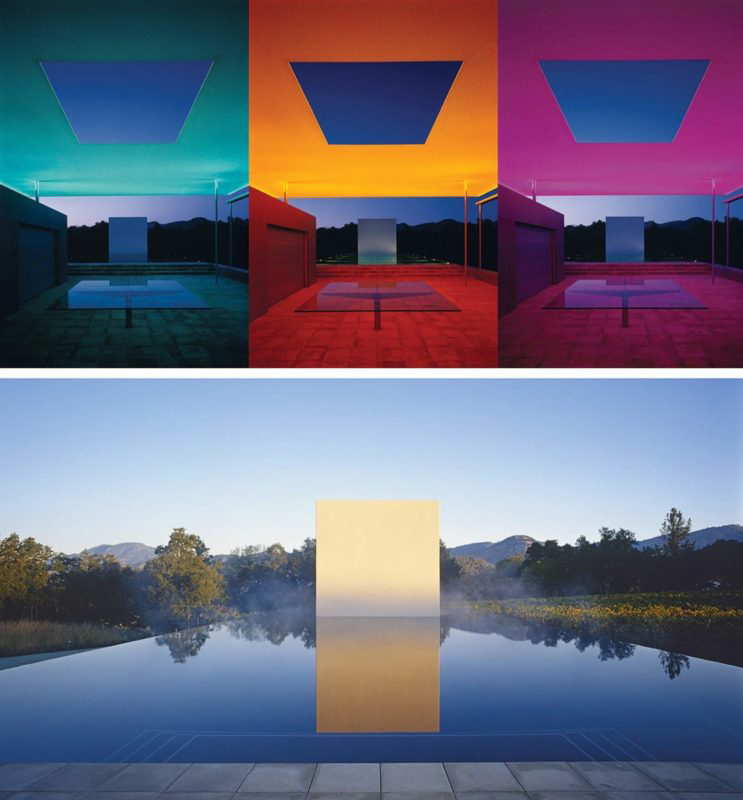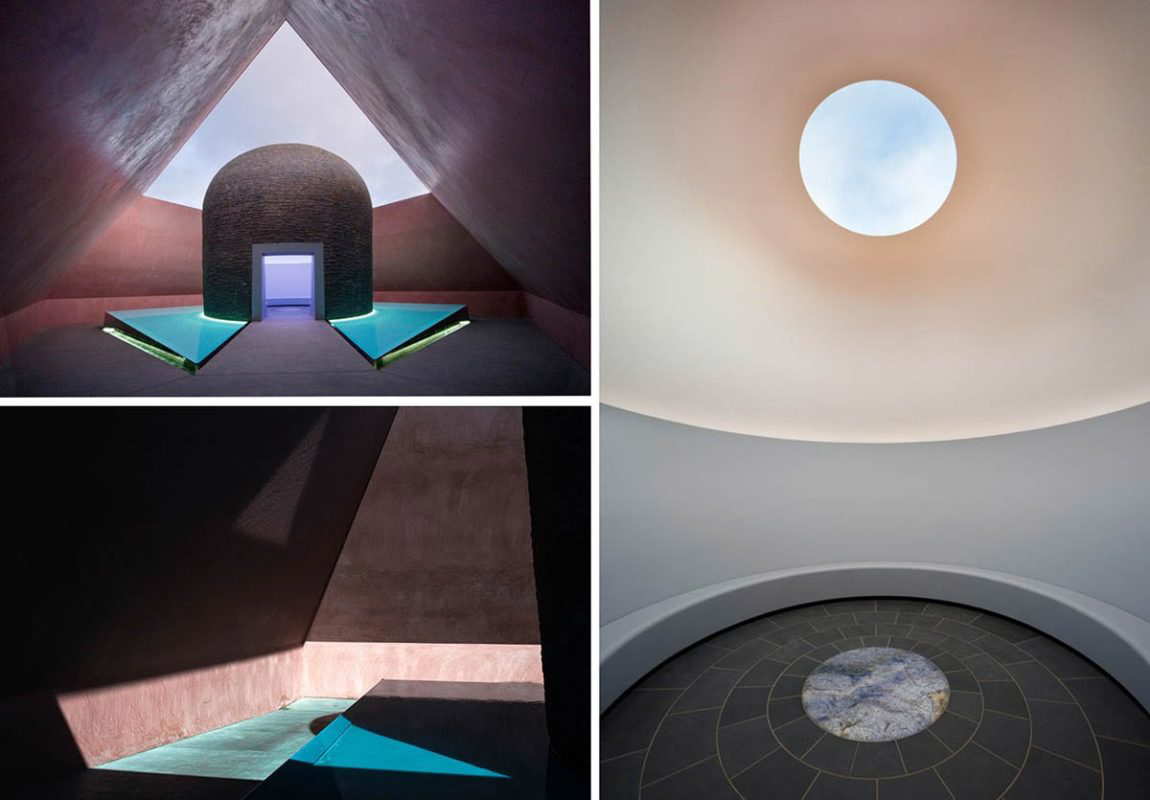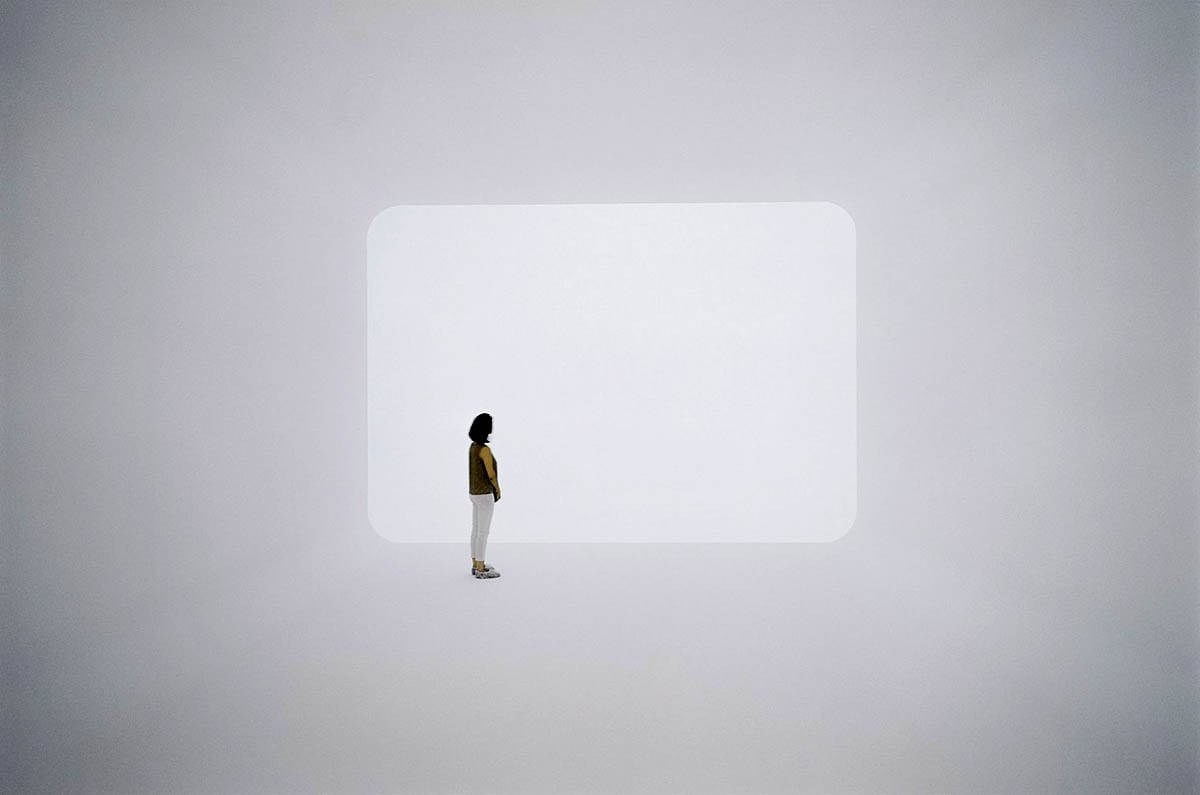
James Turrell manipulates light, space, and nature to create a bridge between the cosmic, the sacred, and everyday existence. His non-vicarious installations demand from the audience a sustained contemplation to reap the full perceptual experience. Appealing to the fundamental ideas of conceptual and minimalist art, Turrell has redefined the limits of artmaking in the 21st century.
James Turrell: A Pilot, A Psychologist, And A Cowboy

When it comes to good stories, those of James Turrell are hard to beat. The LA native, son of Quakers, became a pilot at sixteen when registered as a conscientious objector during the Vietnam War. In 1956 he obtained his B.A. in Perceptual Psychology, right on time to work for the C.I.A. flying monks out of Chinese-controlled Tibet after the 1959 rebellion. In 1965, Turrell pursued Art Graduate Studies at UC Irvine but was interrupted after a year when he was arrested for coaching young men on how to avoid being drafted to Vietnam. The result? He spent almost a year in jail.
Famously known for transforming a 40,000-year-old isolated volcano crater from the Arizona desert into a gigantic Light and Space art observatory, Turrell has also worked as a cattle rancher at his 156 sq miles property, collaborated with the NASA on perceptual psychology, and recently inspired pop-culture celebrities to amplify his art in the most unimaginable ways.
In the 1960s Turrell became part of the Art and Technology program at LACMA to explore light and perception through innovative experimentation. There he met Dr. Edward Wortz, a psychologist who studied the perceptual consequences of space travel for NASA. This inspired Turrell to embark on a whole new mission to create auratic spaces through pure light.
Projection Pieces
Get the latest articles delivered to your inbox
Sign up to our Free Weekly Newsletter
Afrum I (1966) Guggenheim Museum, New York, NY

James Turrell organizes his works into 22 typologies. As part of his Projection Pieces, we find Afrum I which is considered his earliest work of art. It is a geometrical optical illusion that levitates in a shallow corner space.
As the viewers immerse themselves in the artwork, they discover the white cube is not a solid object, but the vision of a three-dimensional spectacle potentiated by the element of light. Turrell creates this apparition by projecting a single and controlled beam of light onto the surface from the opposing corner of the room.
Afrum I explores the link between physics, cosmological knowledge, and human perception. A reminder that while perceptual volumes can be immaterial, they can still be full of clarity.
Shallow Space Constructions
Raemar Pink White (1969) LACMA, Los Angeles, CA

In 1968 and 1969, James Turrell began experimenting more with color. The iconic rectangle of Raemar Pink White appears as a hologram of receding light on the wall of a pink illuminated room. This is one of the earliest Shallow Spaces, and it is meant to be viewed from the rear of the room to challenge the audience’s depth perception. A theatrical game of orientation and access: one notices there is the presence of a window to a celestial world, only to later realize the only glimpse to that world is precisely through its frame.
Space Division Constructions
Amba (1983) Mattress Factory, Pittsburgh, PA

Amba speaks of the influence of Abstract Expressionism, Minimalism, and Color Field. Painters such as JMW Turner and John Constable have visually and philosophically-informed the use of light in James Turrell’s immersive spaces. However, it was Mark Rothko with his large rectangular forms suspended on a soft field of color that ultimately inspired Turrell’s Constructions.
As with Rothko, in Turrell, we find enlarged rectangular forms filled with subtle variations of color that blend in an almost sfumato technique. In Amba, colors take a new three-dimensional role when placed in direct contact with light, creating a hypnotizing and luminous atmospheric effect that provokes both serenity and anxiety.
Skyspaces
Meeting (1980) MoMA PS1, Long Island City, NY

Installed at the MoMA PS1, Meeting looks and feels like a non-denominational chapel within a museum. The visitor is encountered with a squared chamber surrounded by a continuous pew that delineates the tricolor Skyspace. Light and shadows make their way through the top. A perfectly geometric cut in the ceiling frames the sky bringing it optically close to the touch.
Named after James Turrell’s Quaker heritage, Meeting honors the meditative and introspective practice through which one may reach an awareness state of soul-contemplation. Quakerism beliefs are based on spiritual inwardness and value plainness and economy as virtues that bring us closer to the light. This piece aims to expand our relationship with what we consider divine through both seeing and becoming one with light.
Stone Sky (2005) Stonescape, Napa Valley, CA

The view of Stone Sky is enhanced and modified by the seasons, time of the day, and weather. A pavilion leading to an infinity pool expands amid the Napa Valley landscape and its volcanic pinnacles. What makes Stone Sky unique apart from its paper-thin complementing shade canopy and the interplay of elements is its way of access as it is only accessible by swimming underwater. Once there, one must submerge in order to surface into the reflective chamber, where the sky is finally revealed in an 8 x 8 sq. oculus at its center.
Within Without (2010) National Gallery of Australia, Canberra

In the beginning, there was light. Whatever philosophical, scientific, or religious inclination one may hold, light marks the beginning of everything. We are light eaters. Our bodies consume light. Light draws important parallels with spirituality, but also with rational enlightenment. It is light that allows us to discern from darkness and potentializes vision to ultimately enable observation. From observation comes revelation, but what exactly are we observing when we immerse ourselves in the world of Turrell? Light and space? Color and immensity? Ourselves in a new spatial surrounding?
Within Without has an aperture in the ceiling that opens to the atmosphere. It is composed of a terracotta-colored open square pyramid that contains a basalt stupa surrounded by fluorescent cyan water. Inside the stupa is a chamber with a circular aperture that reveals the sky through an oculus that acts as an eye of the universe. Aligned to the oculus and right at the center of the chamber’s floor is a circular semiprecious stone resembling Planet Earth.
Ganzfeld
Apani (2011) Installation view from the Venice Biennial, Private Collection

In early rituals and beyond, light has appeared as an essential element of worship that grants mankind access to wisdom and illumination of the self and the environment. James Turrell uses interchanging colors, light sequences, and space as his chosen media and subject in Apani, which speaks of a transcendent power related to humankind’s origins, grace, and a state of rapture.
According to the artist, the Ganzfeld pieces evoke a total loss of the depths of perception as in the experience of a white-out. A new landscape without horizon lines, Apani surrounds the viewer in a balmy glowy realm of primordial interaction with the blank state that preceded the natural elements. Turrell allows us to find ourselves in a state of contemplation where seeing is becoming.
Perceptual Cells
Light Reignfall (2011) LACMA, Los Angeles, CA

A Perceptual Cell is an enclosed and autonomous space built to be experienced by one person at a time. A technician supervises and operates the multidimensional saturated light chamber for 12 minutes. These capsules challenge one’s perception of space by a spectacle of synchronized light and a frequency of vibrations that translate into sound.
Light Reignfall is an immersive experience of the senses through imagery, spatial architecture, and theories of light perception. It aims to bring visitors to an alpha state of wakeful relaxation and induced meditation by resembling specific procedures such as having an MRI.
Crater Space
Celestial Vault (1996), The Hague, Holland

One of the most magical pieces by James Turrell is Celestial Vault, located in the dunes of The Hague. Made possible in part by the Herinneringsfonds Vincent van Gogh, the colossal artificial Crater Space enables a sublime experience of infinite starry skies where light becomes an almost tangible presence at night.
An elevated wall encloses a giant elliptical bowl with a monolithic bench in the center where two people can lie down to observe the luminous sky. The integration of nature and technology evokes a primordial memory as a space for re-encountering our relationship with the universe.
Roden Crater Project, (1977 – Present) Flagstaff, AZ

There is no picture that can do justice to what you can find inside Roden Crater, the most ambitious project by James Turrell. Framed in a geologic landscape on the edge of Arizona’s Painted Desert, the crater is a meteorological phenomenon in which Turrell identified what would become the omphalos of his creations. This natural cinder cone volcano has been a work-in-progress since 1972 and still awaits its final completion. His mission? The ultimate conquest of heaven on earth.
Resembling traditions of ancient cultures of man-made temples to observe celestial events, Turrell merges art and perceptual science to sublimate cosmological approaches to light and dominate the sky. An intricate network of 21 subterranean chambers and 6 tunnels will transform the crater into a naked-eye observatory full of his iconic installations.
James Turrell’s Ongoing Work With The Roden Crater

The story of the project itself is just as fascinating as the one of the crater. James Turrell encountered the site whilst flying the Arizona skies and purchased it months later with an agriculture bank loan. Since then, Turrell has collaborated with astronomers and architects to achieve his stairway to heaven. As of now, 6 chambers have been completed, and thanks to multiple donors it is scheduled to open to the public within the next 5 years.
As the 77-years-old artist grows in urgency to complete the Roden Crater, we must patiently wait for his vision to be fulfilled, and to discover the extents of our power to intervene in the construction and deconstruction of the universe. Until then, only an overlook of his oeuvre can guide our imagination to envision what his final conquest of heaven will be like.








